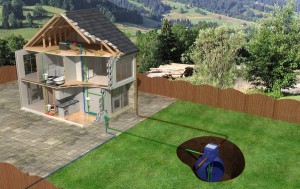Rainwater collected from the roof can be used for a number of domestic uses such as toilet flushing, clothes washing, gardens, showering/bathing and even drinking and cooking. The more uses, the less the reliance on mains water and the greater the savings. A well designed system of collection is important and maintenance is crucial to minimise contamination.

Water Harvesting and Lead
In Australia a product to be used on your roof where there is water catchment must comply with S/NZS 4020:2005 ‘Products for use in contact with drinking water’. This is really about safety and contamination. The roof is obviously a great area to catch water that can be recycled for the many uses mentioned above. Lead is the main danger here. Lead has traditionally been used for roof flashing, but it does not comply with 4020:2005, it has been a good product to use for the last 100 years to keep water out but in today’s modern times, there are better lead free alternatives if you are considering water catchment for any use.
Other Roofing materials
It’s very important that you check and verify that there is no lead flashings on your roof if you want to catch water. You should also not use water for drinking if it has come into contact with treated timbers that may have chemicals, bitumen based products or asbestos. This applies to roof paints too. Some roofs have been restored and repainted often with lead or bitumen based paints.
Health and safety is the key… If you don’t know get a professional opinion.
Other Things to Watch For
Leaves and bird droppings are other things that can contaminate. Things such as leaf guards on gutters and leaf screen on down pipes can keep debris out of the storage tanks. Diverters are also an option to consider, these divert the initial rain away from the storage tanks – Ideally the more initial water diverted the better the quality of water. You will need to check guttering and down pipes before you capture the water and store it for any rust spots or leaks.
There’s Lots To Do
It’s reported that nearly 40% of Adelaide households have installed water tanks, but only 5% of households in Perth, Melbourne and Sydney have them. The Australian average is just 17%. A study conducted on 3750 households in an area in northern Melbourne established each person in the area uses around 97 litres of potable water per day. 30% of the households have rainwater tanks and 3% are reusing their grey water. If governments choose initiatives to roll out rainwater tanks to just 5% in Sydney and south-east Queensland other big water projects like dams could be delayed for up to a decade. So get the lead out and the water tank in!
